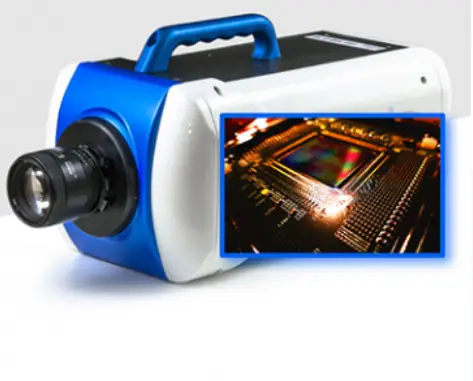SI Sensors specialises in designing innovative CMOS image sensors for ultra-fast cameras, enhancing the speed at which signal electrons are detected by increasing their velocity, thereby allowing faster detection within the photodiode.
Developing ultra-high-speed CMOS image sensors presents significant challenges due to the extremely short integration times required at very high frame rates, which result in insufficient light. Therefore, these sensors must exhibit very high sensitivity (Quantum Efficiency) to ensure no photons are wasted.
“Detecting weak signals is all about maximising the signal to noise ratio. It is therefore equally important to minimise noise sources within the sensor such that the relatively weak signal provided by the limited available light can be detected above the noise floor,” explained Philip Brown, General Manager of SI Sensors. “However, running the various sampling circuits within an image sensor at high speed tends to increase the noise.
“The design of these circuits including the individual transistor geometries and layout must be optimised with regards to speed and noise, which requires intimate knowledge of the mixed signal circuit design and fabrication processes used, as well as significant simulation and verification using cutting edge software design tools. Drawing upon our team of highly experienced CMOS specialists – SI Sensors are designing image sensors which are approaching the limit of what is physically possible. For ultra-fast imaging we have designed novel structures within the photodiode to create drift fields which increase the velocity of the signal electrons to allow them to be swept out of the photodiode to be detected much faster.
“SI Sensors are developing innovative ultra-fast image sensors that will find application in the next generation of ultra high-speed cameras. Using our next generation CMOS sensor technology these cameras will enable scientists and engineers to image ultra-fast phenomena more precisely, and in more detail than ever before and help progress developments in applications including nuclear fusion, ballistics, detonics, medical research, spray analysis, combustion research, nanotechnology and failure dynamics.”
Original article source: https://www.electronicspecifier.com/products/sensors/si-sensor-discusses-image-sensors-for-fast-cameras
FAQ
- What is an image sensor, and how does it work in fast cameras?
– Answer: An image sensor captures light to convert it into electronic signals that form an image. In fast cameras, high-speed sensors are designed to capture rapid motion or high frame rates. They use technologies such as CMOS (Complementary Metal-Oxide-Semiconductor) or CCD (Charge-Coupled Device) to handle fast image acquisition and processing.
- What are the main types of image sensors used in fast cameras?
– Answer: The two main types are CMOS sensors and CCD sensors. CMOS sensors are often preferred for high-speed applications due to their ability to read out data quickly and their lower power consumption. CCD sensors are known for their high-quality images but can be slower and more power-hungry.
- What is frame rate, and why is it important for fast cameras?
– Answer: Frame rate is the number of frames captured per second. For fast cameras, high frame rates are crucial to capture rapid movements or events accurately. Typical fast cameras might operate at thousands or even millions of frames per second.
- How does sensor resolution impact fast camera performance?
– Answer: Higher resolution sensors provide more detail in each frame but can also require more processing power and memory. In fast cameras, there is often a trade-off between resolution and frame rate, as higher resolution can reduce the achievable frame rate.
- What are global shutter and rolling shutter, and which is better for fast cameras?
– Answer: Global shutter captures the entire frame simultaneously, making it ideal for fast-moving subjects as it eliminates distortion. Rolling shutter captures the frame line by line, which can result in motion artifacts but is often used in CMOS sensors due to its simpler design and lower cost.
- What factors should be considered when choosing an image sensor for a fast camera?
– Answer: Considerations include frame rate, resolution, sensor type (CMOS or CCD), sensitivity (to low light), readout speed, and shutter type (global or rolling). The specific requirements of your application will determine the best sensor for your needs.
- What role does pixel size play in sensor performance?
– Answer: Larger pixels can capture more light, improving sensitivity and image quality. However, in fast cameras, smaller pixels might be used to increase the number of pixels and hence the resolution, but this can affect sensitivity and noise levels.
